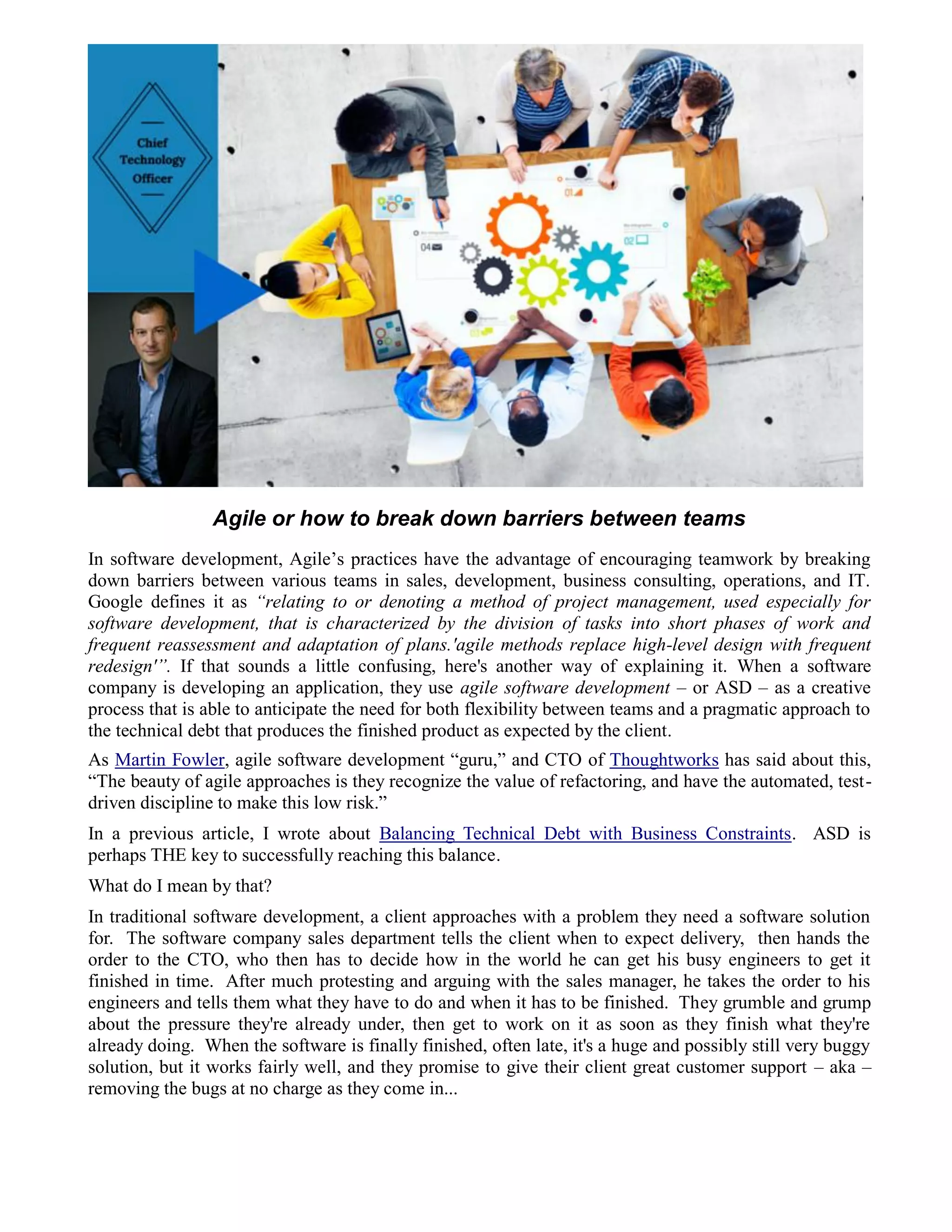Agile software development promotes teamwork by breaking down barriers among various teams involved in the software creation process, emphasizing collaboration, continuous customer feedback, and adaptability to changing requirements. Originating from the dynamic systems development method, the Agile Manifesto prioritizes customer satisfaction through early delivery of small, workable software segments, reducing technical debt and enhancing client confidence. By fostering a creative and motivating environment for team members, Agile aims to focus on technical excellence and sustainable development in the face of rapidly evolving business needs.


